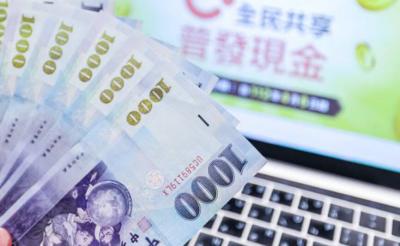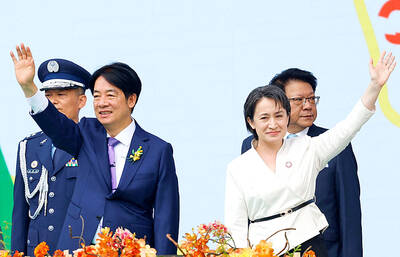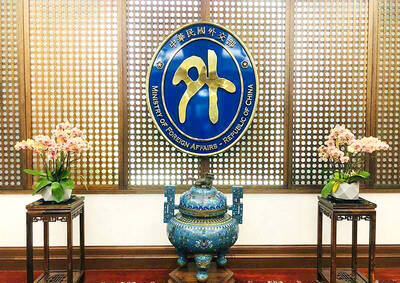Researchers have found ethnobotanical support for the “out of Taiwan” theory of Austronesian expansion by identifying that the DNA sequences of paper mulberry trees found on Pacific islands originated from Taiwan.
An international team led by National Taiwan University forestry professor Chung Kuo-fang (鍾國芳) analyzed the chloroplast DNA sequences of 604 paper mulberry samples collected from East Asia, Southeast Asia, and Pacific islands, and found that a specific haplotype, cp-17, which originated in Taiwan, is predominant across the region.
It is assumed that paper mulberry, a common East Asian tree used for making paper, was transported across the Pacific by Austronesian people, who used the tree to make bark cloth, Chung said.
The team’s analysis found that the genetic structure and evolutionary development of Oceanic paper mulberries are concurrent with the paper mulberries in southern Taiwan, which offers circumstantial support for the “out of Taiwan” theory of Austronesian expansion, Chung said.
Paper mulberry is a dioecious species, meaning that the male and female reproductive organs are found on separate plants.
Most Pacific paper mulberries are of a single sex, so they cannot reproduce naturally, but rely on humans for propagation, Chung said, adding that those conditions are critical to preserving the genetic structure of the tree.
The study was the first to use the migration of “commensal species” — non-native animals or plants that are instrumental to human survival and are introduced into a region — to support the “out of Taiwan” hypothesis, he said, adding that linguistic, archeological and genetic studies have produced important evidence that points to Taiwan as an Austronesian ancestral homeland.
The “out of Taiwan” hypothesis is a mainstream model of Austronesian expansion, which assumes that a large-scale expansion began between 5000 BC and 2500 BC, when Austronesian-speaking peoples migrated from Taiwan to Southeast Asia and the Pacific.
The research also provides insight into the dispersal of paper mulberry from southern China into northern Taiwan, as a large amount of mulberry pollen was discovered in sediments in Taipei that could be dated back to 5000 BC, about the same time pre-Austronesian-speaking peoples from southern China are believed to have migrated to Taiwan, Chung said.
Stone beaters — that were used by Austronesian migrants to make bark cloth — found at archeological sites in northern Taiwan could also be dated back to about 5000 BC, suggesting that ancestral Austronesians migrated from southern China to northern Taiwan and planted the trees along the migration route, he said.
The team spent seven years collecting and analyzing paper mulberry samples from Pacific islands and Southeast Asia, and the results were published in the academic journal Proceedings of the National Academy of Sciences earlier this month.

The Executive Yuan yesterday announced that registration for a one-time universal NT$10,000 cash handout to help people in Taiwan survive US tariffs and inflation would start on Nov. 5, with payouts available as early as Nov. 12. Who is eligible for the handout? Registered Taiwanese nationals are eligible, including those born in Taiwan before April 30 next year with a birth certificate. Non-registered nationals with residence permits, foreign permanent residents and foreign spouses of Taiwanese citizens with residence permits also qualify for the handouts. For people who meet the eligibility requirements, but passed away between yesterday and April 30 next year, surviving family members

The German city of Hamburg on Oct. 14 named a bridge “Kaohsiung-Brucke” after the Taiwanese city of Kaohsiung. The footbridge, formerly known as F566, is to the east of the Speicherstadt, the world’s largest warehouse district, and connects the Dar-es-Salaam-Platz to the Brooktorpromenade near the Port of Hamburg on the Elbe River. Timo Fischer, a Free Democratic Party member of the Hamburg-Mitte District Assembly, in May last year proposed the name change with support from members of the Social Democratic Party and the Christian Democratic Union. Kaohsiung and Hamburg in 1999 inked a sister city agreement, but despite more than a quarter-century of

Taiwanese officials are courting podcasters and influencers aligned with US President Donald Trump as they grow more worried the US leader could undermine Taiwanese interests in talks with China, people familiar with the matter said. Trump has said Taiwan would likely be on the agenda when he is expected to meet Chinese President Xi Jinping (習近平) next week in a bid to resolve persistent trade tensions. China has asked the White House to officially declare it “opposes” Taiwanese independence, Bloomberg reported last month, a concession that would mark a major diplomatic win for Beijing. President William Lai (賴清德) and his top officials

The Ministry of Foreign Affairs (MOFA) yesterday expressed “grave concerns” after Singaporean Prime Minister Lawrence Wong (黃循財) reiterated the city-state’s opposition to “Taiwanese independence” during a meeting with Chinese Premier Li Qiang (李強). In Singapore on Saturday, Wong and Li discussed cross-strait developments, the Singaporean Ministry of Foreign Affairs said in a statement. “Prime Minister Wong reiterated that Singapore has a clear and consistent ‘one China’ policy and is opposed to Taiwan independence,” it said. MOFA responded that it is an objective fact and a common understanding shared by many that the Republic of China (ROC) is an independent, sovereign nation, with world-leading